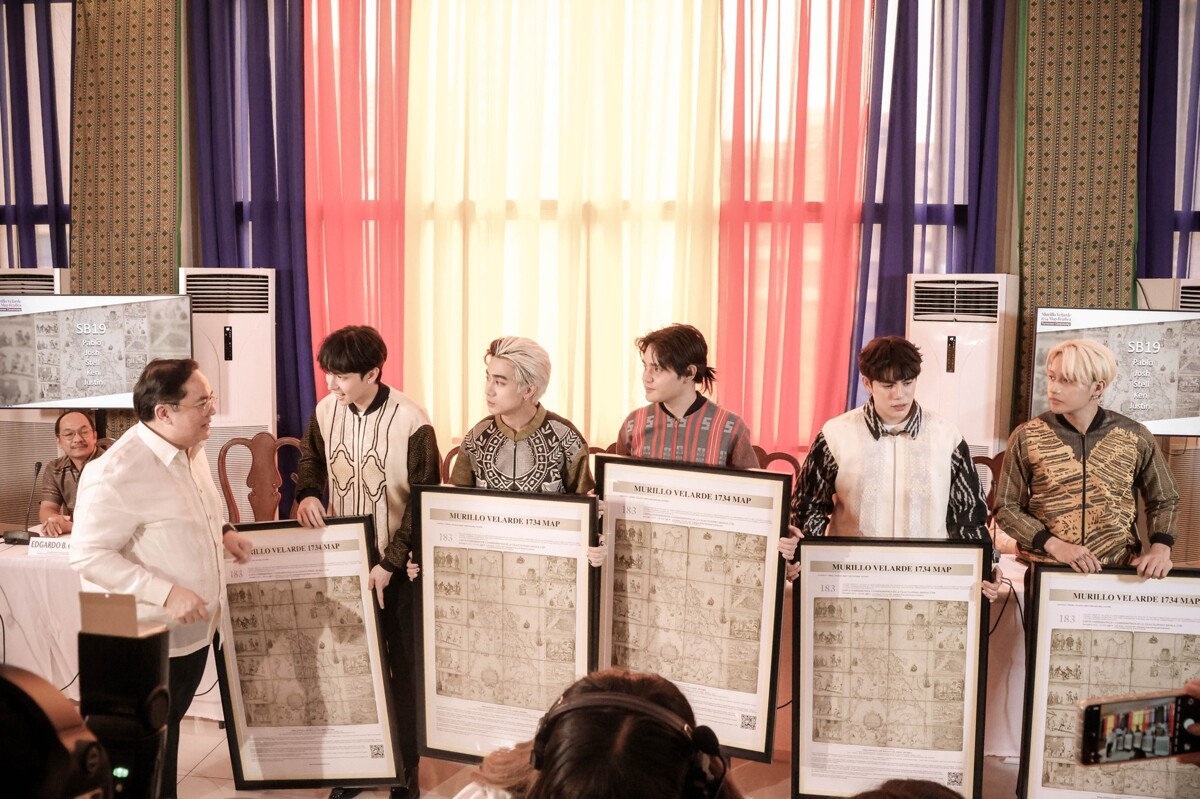
P-pop group SB19 has been presented with official replicas of the Murillo Velarde Map in recognition of their efforts to incorporate Philippine culture and heritage into their music. The original 1734 map was donated to the National Library of the Philippines by Asian Institute of Journalism and Communication Chairman Mel Velarde.
In praising SB19 for their role in fostering Filipino pride through music, Velarde compared the group's impact to the guidance provided by the historic map to explorers. He emphasized that SB19's music and dedication act as a guiding light for future generations, illuminating countless possibilities.
During the turnover ceremony, a music video of SB19's song "What" was shown, creatively weaving elements of the Murillo Velarde Map into the visuals. This artistic representation highlighted the group's commitment to elevating Filipino culture through their music.
The 1734 Murillo Velarde Map is a significant historical document in the Philippines as it is the first scientific map depicting the entire Philippine archipelago. Often referred to as the "Mother of All Philippine Maps," it was originally published by Spanish Jesuit Father Pedro Murillo Velarde in collaboration with Filipino artists Francisco Suarez and Nicolas dela Cruz Bagay.
This map played a crucial role in asserting the Philippines' territorial claims in the South China Sea, along with 270 other ancient maps, during the Permanent Court of Arbitration proceedings in The Hague, Netherlands. Notably, the map features "Panacot," now known as Scarborough Shoal, and refers to the Spratly Islands as "Los Bajos de Paragua."
The 2016 ruling by The Hague invalidated China's 9-dash-line territorial assertions in the South China Sea, determining them to be without a legal basis. The decision reinforced the importance of historical evidence such as the Murillo Velarde Map in clarifying territorial disputes in the region.














